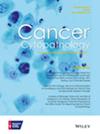Application of the Milan and IAC–IARC–WHO Systems in diagnosing soft tissue and bone tumors of the salivary glands: The Institut Curie experience
Abstract
Background
Soft tissue and bone tumors of the salivary gland were compared using classic 4-tier, Milan System for Reporting Salivary Gland Cytopathology (MSRSGC), and the International Academy of Cytology-International Agency for Research on Cancer-World Health Organization (IAC–IARC–WHO) Reporting System for Soft Tissue Cytopathology.
Methods
The authors retrospectively analyzed 2219 salivary gland fine-needle aspiration (FNA) samples collected at the Institut Curie in Paris between 1954 and 2022. A total of 86 cases (3.9%) were identified as soft tissue and bone tumors, with histological follow-up in 63 cases (73%). Cytology was classified according to the classic European 4-tier system, the MSRSGC, and the IAC–IARC–WHO System.
Results
According to the MSRSGC, eight cases were classified as nonneoplastic, 30 as benign, one as salivary gland neoplasm of uncertain malignant potential, five as suspicious for malignancy, and 42 as malignant. Benign or malignant nature was accurately assessed in 78 cases (90.7%), with exact histologic-cytologic concordance in 51 cases (59.3%). FNA correctly identified 42 of 44 malignant tumors (95.5%), with exact diagnostic matches in 30 cases (68.2%). The MSRSGC achieved 88.3% overall accuracy, 93.6% sensitivity, and 82.7% specificity. Risk of malignancy (ROM) was comparable for malignant tumors across the classic European system, the MSRSGC, and the IAC–IARC–WHO System, with minor discrepancies observed in benign and indeterminate categories. No cases were assigned as nondiagnostic, atypia of undetermined significance, atypical.
Conclusions
Despite their rarity, soft tissue and bone tumors of the salivary gland can be effectively diagnosed using the MSRSGC, with a high accuracy achieved for malignant cases. Minor discrepancies in ROMs were observed between specific categories of the classic European system, the MSRSGC, and the IAC–IARC–WHO System.





 求助内容:
求助内容: 应助结果提醒方式:
应助结果提醒方式:


